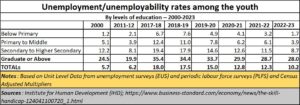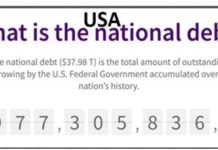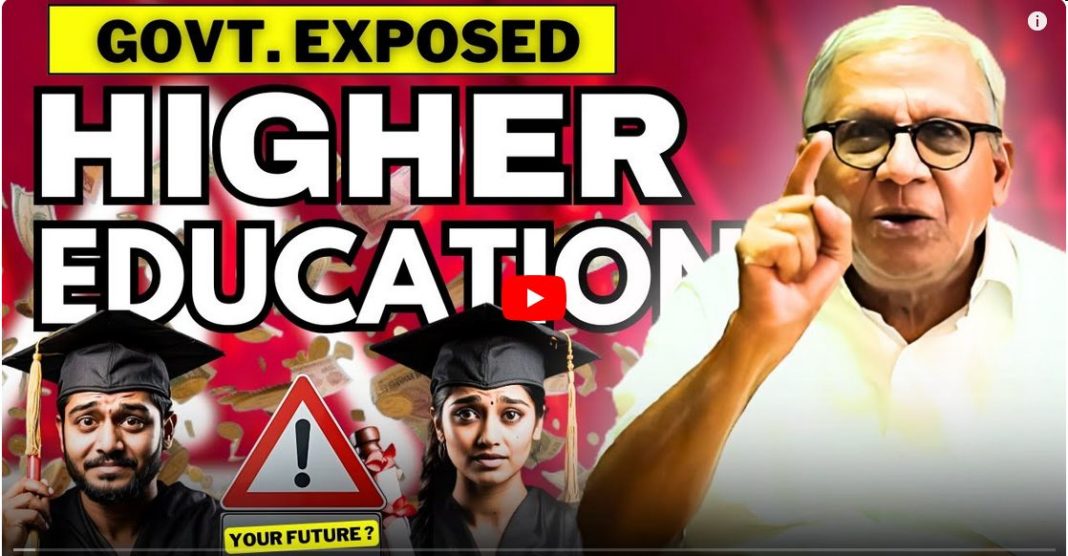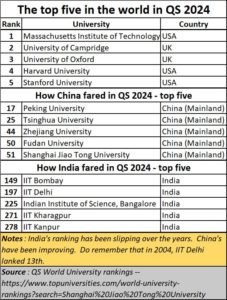A huge educational crisis confronts India – can it be saved?
By RN Bhaskar
In October 2004, IITD (Indian Institute of Technology – Delhi) ranked 13th in the first edition of the QS University Rankings (https://www.topuniversities.com/university-rankings-articles/brics-rankings/top-universities-india). By 2024, its ranking had slipped to 197. A similar story could be said about all the premier IITs in the country.
Question: What happened? Answer: The Indian government.
What did the government do?
To understand this, it is important to go to the historical, anecdotal, and even the present government administration (https://www.youtube.com/watch?v=s5a8_ML4cls).
This is because, at no other time did India have the arrogance to call itself Vishwaguru (roughly translated “teacher to the world”).
It is when you try to peer through the hoary mists of history, that you realise that India (or at least the territory that is now known as India) never really cared for education. This is a truth that is often hidden from people.
Yes, India had many gurus of supreme eminence, who gave to the world a body of knowledge. But this is what almost every culture does. You will find Arab mathematicians, European scientists in addition to Indian gurus who gave the world their insights into the human anatomy, mathematics, astronomy, and mathematics. There was no need to try make India usurp the title of vishwaguru. Moreover, it was even inappropriate.
This is because of a major difference between education in India and the world. While many cultures moved towards democratisation of education, India did not. In fact, the first time India moved towards democratisation of education was when the Buddhists set up Taxila (or Takshashila) was set up in the 6th century BC (Marshall, John (2013). A Guide to Taxila. Cambridge University Press. pp. 23–24 followed by Nalanda in 426 CE (Pinkney, Andrea M (2014). “Looking West to India: Asian education, intra-Asian renaissance, and the Nalanda revival”). Both were Buddhist Universities, but meant for Buddhists and non-Buddhists alike.
Indian Gurukuls since times immemorial were only mean for children of Brahmins, kings, and royalty. Common folk were prohibited from acquiring knowledge. In fact, there is the touching and painful legend of Eklavya (https://wisdom.srisriravishankar.org/story-eklavya-devotion/) who was the son of a poor hunter and not among those where were privileged to get education. But he had a burning desire to learn and was fascinated by archery. When it was discovered that he had been secretly watching the guru train his disciples, the guru asked him for his right thumb as payment for these teachings (thus rendering him inept at archery).
It was a brutal punishment for anyone who desired to learn.
Look at education today. Jawaharlal Nehru, the first prime minister of India, had a vision of making quality education available and accessible to the masses. Subsequent governments did not share this vision, especially after the prime ministership of Atal Bihari Vajpayee. Quality education has been made expensive, affordable only to the gentry. Only sons of ministers and rich parents can afford to get into many of these universities. The number of seats has remained restricted. Getting permission to set up a school or college has become extremely cumbersome. Populism has replaced vision – right from reservations for teaching posts, for student admissions, and burdening teachers with more administrative work rather than allowing them to pursue academic research.
There is another anecdotal story that people overlook. When the world’s first (amazing) universities of Nalanda and Taxila were razed to the ground by Bakhtiyar Khilji, Indians are told about how cruel and uncultured Bakhtiyar was. But few ask why people in this territory went about rebuilding temples, but not the universities. Clearly, education was not a burning need!
Nehru tried to break away from the myopic caste-based privileges of the past which reserved higher education exclusively for the privileged. But setting up educational institutions is one thing. You need subsequent governments to nurture them as well. Narasimha Rao had a hands-off approach. Vajpayee wanted educational institutions to strive towards excellence. But then subsequent ministers kept on driving one nail after another into the coffin they wanted to build. Education Minister Arjun Singh tried to strip away the autonomy that the IIMs (Indian Institutes of Management) and IITs enjoyed (https://www.educationtimes.com/article/newsroom/69578388/arjun-singh-gets-critical-of-iims-and-iits). He tried to bring in faculty quotas (https://www.indiatoday.in/latest-headlines/story/arjun-singh-retreats-on-iit-faculty-quotas-38329-2009-01-29). The Brahminical and regal desire to deny educational autonomy had begun raising its head. He even wanted donations by alumni to be transferred to the government which would then decide on how they should be used.
The present government too has continued to wreak havoc with higher educational institutions. By 2023, the government brought in new measures to curb the freedom they enjoyed (https://indianexpress.com/article/india/centres-bill-dilutes-autonomy-of-iims-president-is-visitor-8867098/). Even earlier, in 2015, everyone was aware that curbing the autonomy of higher educational institutes would erode their branding and quality standards (https://www.hindustantimes.com/comment/move-to-curb-autonomy-of-iims-may-result-in-dilution-of-brand-value/story-qqgWMb6A5ipzq41dchgWiI.html).
And now you can see what has happened.
Education devalued
Today, higher education is bedeviled by three major problems.
The first problem is the poor quality of student intake. This is because the school system has almost collapsed in India. Pratham’s ASER reports bear testimony to this fact (https://img.asercentre.org/docs/ASER%202018/Release%20Material./aserreport2018.pdf).
It is the same story of GIGO – garbage in, garbage out. No university or college can be expected to remedy 12 years of rotten school education. My daughter was a post graduate student of English Literature in University of Bombay and then discovered that the head of that department could not speak English well. She finally chose to go overseas and complete her education. Most graduates from this terrible educational system are thus unemployable. More details can be found at Free subscription — https://bhaskarr.substack.com/p/the-state-of-education-in-india.
 In fact, a recent article in Business Standard gave out some painful data. It shows quite clearly, how the graduate or above has less chances of being employed than the uneducated. Unfortunately, these numbers conceal the harsh reality – documented by organisations like TCA, McKinsey’s, and others that of 100 applicants for jobs barely 20-30 percent are employable. Ask law firms and they put the employability number at 1%.
In fact, a recent article in Business Standard gave out some painful data. It shows quite clearly, how the graduate or above has less chances of being employed than the uneducated. Unfortunately, these numbers conceal the harsh reality – documented by organisations like TCA, McKinsey’s, and others that of 100 applicants for jobs barely 20-30 percent are employable. Ask law firms and they put the employability number at 1%.
Figures submitted to Parliament also confirm this. This was the theme of our first podcast in the education series (https://www.youtube.com/watch?v=z3LyOnG_nEg).
The second problem is the unwillingness of the government on the part of the government to fund education properly and grant them autonomy. For instance, just 20 years ag, IITs in India were ranked higher than Chinese Universities. Today, Chinese Universities rank higher. Indian Universities rank lower. For instance, IITs which had one student to one hostel room, today have three to a room with painful consequences. More can be found at free subscription — https://bhaskarr.substack.com/p/the-state-of-higher-education-in?sd=pf . Absence of funding leads to teachers being asked to do onerous administrative work which should have been left to office assistants.
The third is the erosion of dignity for the teachers and doctors. At the slightest provocation, crowds gather to beat up, and blacken the faces of doctors and teachers they do not like.
India’s refusal to get its educational institutions ranked by reputed organisations like PISA is yet another problem. At the last PISA ranking, India stood 72 out of 73 participants (https://asiaconverge.com/2023/12/is-india-scared-of-the-pisa-truth/).
Unwillingness to spend on higher education has resulted in few medical education seats. Consequently, India has less doctors per 1,000 people than even Pakistan (Free subscription: https://open.substack.com/pub/bhaskarr/p/medical-education-in-india-is-growing?r=ni0hb&utm_campaign=post&utm_medium=web)
That is why this author has decided to a series of podcasts on education – the list of podcasts already up for public consumption can be found at https://www.youtube.com/@bkbb4rnb.
Unless such trends are reversed, India runs the risk of actually losing GDP growth, as it will be racked by violence. What else can you expect when the government promotes NINJAS – people without incomes jobs or assets. When you ensure poor education and unemployment, you create an army of people who will be ready to go on a riot, if paid by people willing to stoke fires.
India confronts a major crisis. It needs to be addressed.







































COMMENTS